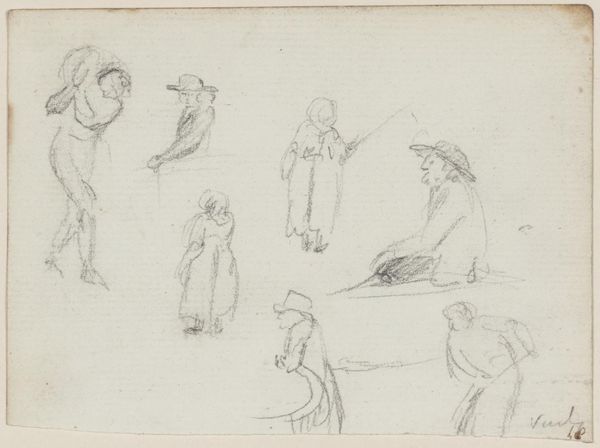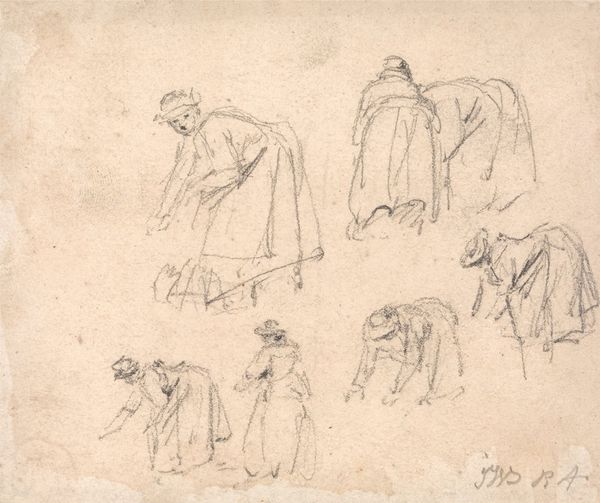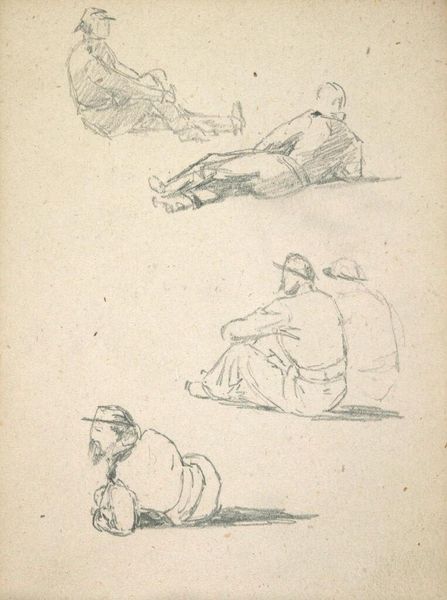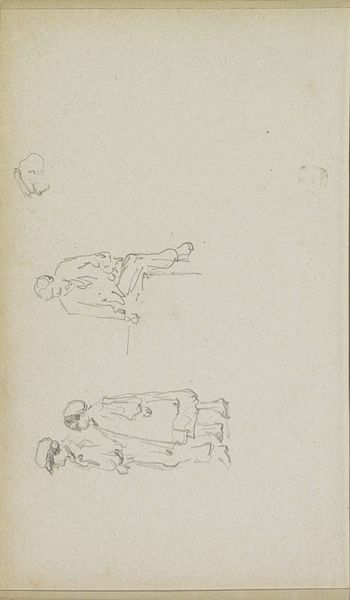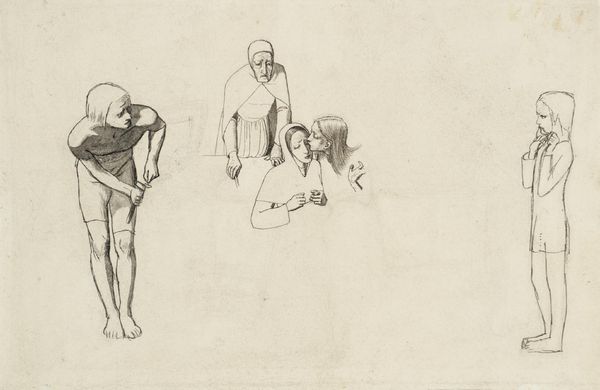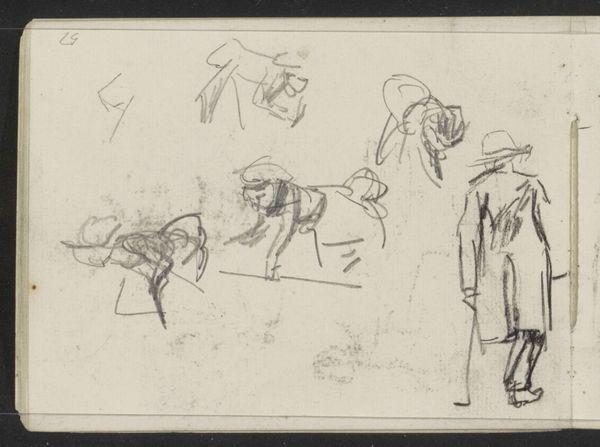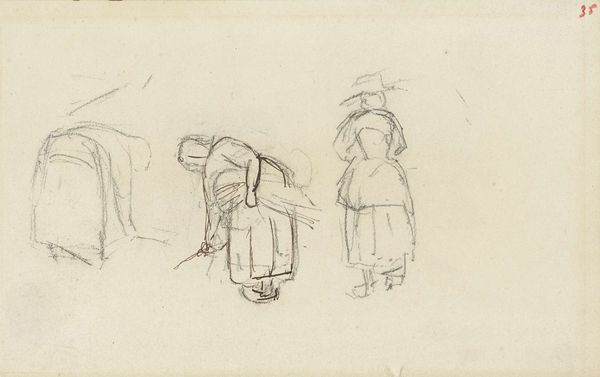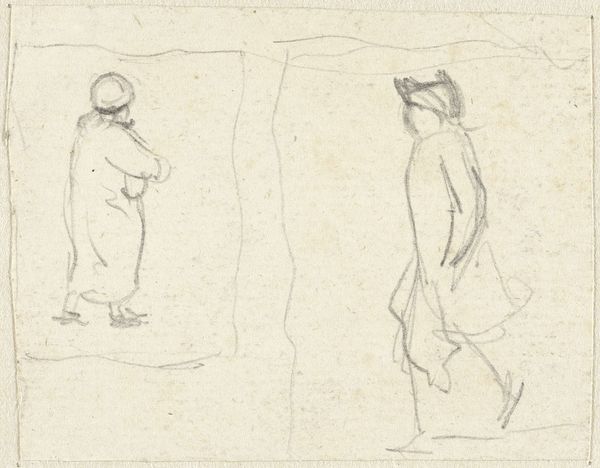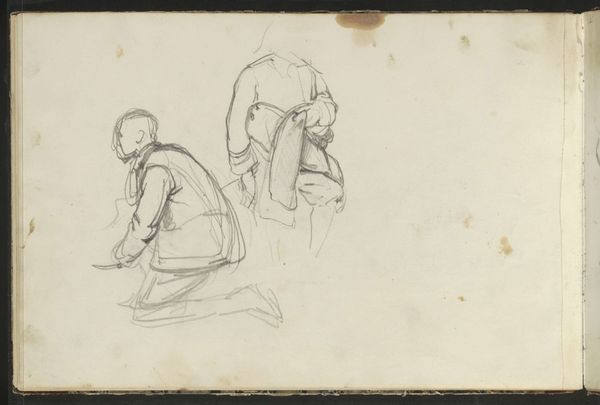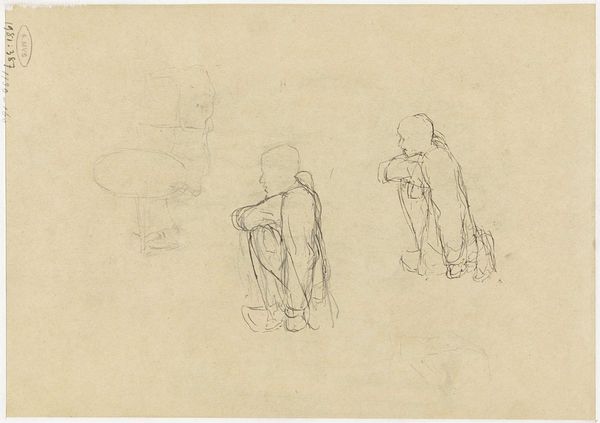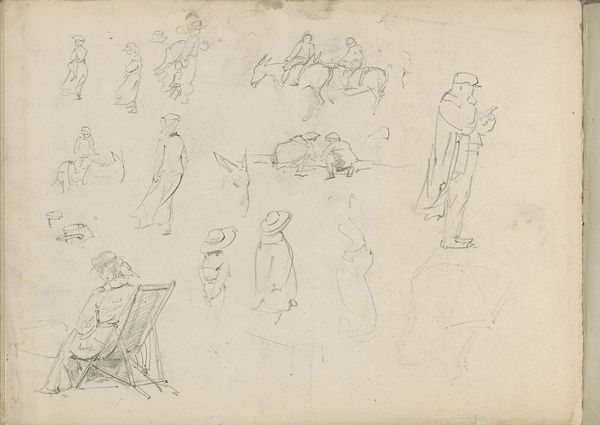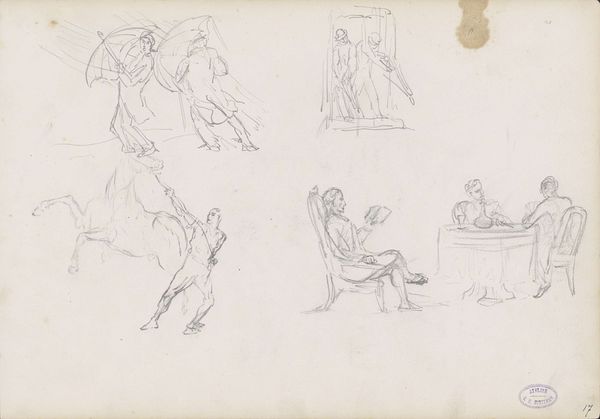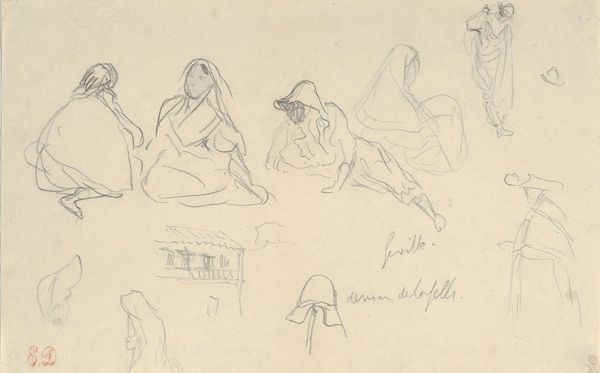
drawing, pencil
#
portrait
#
drawing
#
figuration
#
pencil
#
genre-painting
Copyright: Public Domain: Artvee
Editor: This drawing is entitled *Trois esquisses de femmes,* by Narcisse-Virgilio Diaz, and it seems to be a pencil drawing. The image depicts three different sketches of women, seemingly caught in moments of labor or repose. There's a certain weightiness to their postures. What can you tell me about this work? Curator: These types of studies, although not inherently political, open a fascinating window into the artistic process and social context. Diaz, while known for his Romantic landscapes, also sketched figures, especially those of the working class. How do you think portraying working women was seen in 19th century France, particularly with increasing visibility and discussions of labor conditions? Editor: I imagine that showing women working, instead of the usual wealthy or mythical figures, was at least a subtle comment on society. Was Diaz making a broader point, maybe about the role of women? Curator: Perhaps not a deliberate manifesto, but his sketches, exhibited in the context of increasing social realism, participates in that trend of validating women's work. He elevates the everyday by giving it his artistic attention, inviting us to really *see* these figures who often remain unseen by the upper classes. This reflects shifting socio-political tides in artistic circles, wouldn't you say? Editor: I see what you mean. It wasn't necessarily an explicit statement, but putting these images on display at all added to a growing dialogue. I never would have looked at it this way, I was just thinking about composition and form, rather than the historical meaning of the art itself. Curator: Precisely. Consider how even seemingly apolitical choices reflect and influence the culture around them, particularly regarding social classes.
Comments
No comments
Be the first to comment and join the conversation on the ultimate creative platform.
